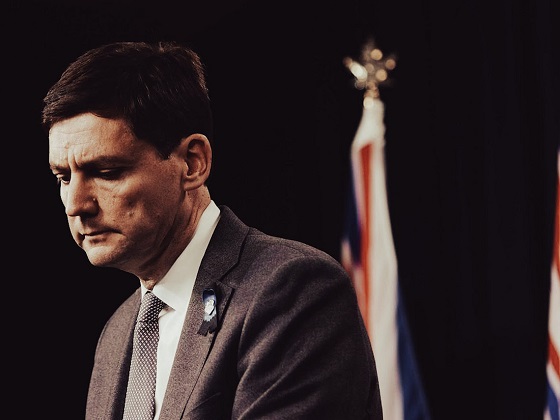Alberta
Premier Kenney announced five more COVID deaths – Alberta COVID Update for April 3

From the Province of Alberta
Alberta Bits and Pieces program highlights Albertan ingenuity, generosity
Over the past week, more than 1,100 offers of support have poured in from private and non-profit organizations through the Government of Alberta’s Bits and Pieces program.
The offers include passenger and commercial vehicles, hotel rooms and mobile trailers, food and water services, hospital gowns, face masks, ventilators and other personal protective equipment. They also highlight innovation in local manufacturing, with several Alberta distilleries offering sanitizer they produced and a drapery manufacturer offering medical garments and bedding it produced.
The program is named after the “bits and pieces program” established by Canada’s Minister of Munitions and Supply during the Second World War, C. D. Howe. The program coordinated innovative production and procurement efforts from across the Canadian economy to support the war effort.
“I’m deeply touched by the outpouring of support we’re seeing from private and non-profit organizations, both foreign and domestic. When times are tough, Alberta’s spirit of ingenuity and generosity always answers the call.”
One example is ATCO, the Alberta-founded and based company that got its start providing trailers for the oilpatch and is now best known to Albertans as a provider of gas and electricity, which has offered to contribute up to several hundred trailers if needed. These could be used for COVID testing, treatment and quarantining, especially in rural and remote areas without adequate medical facilities.
In addition to many local companies offering and innovating to provide products, Alberta’s post-secondary institutions are leading in areas of research, with one researcher at the University of Alberta working to develop a virus-killing medical mask.
“Albertans are leaders, and I’m humbled to see our province leading and giving back in so many ways. The offers and innovation we’re seeing take place across our province right now will help our government meet the demands and challenges we face today, and the ones we’ll face in the future.”
The Government of Alberta encourages individuals, private companies and non-profit organizations who can offer products and services, including personal protective equipment, to visit the offers webpage at alberta.ca/covid19.
Examples of Alberta companies filling the need
- ATCO has confirmed their ability to deploy hundreds of trailers for medical testing, quarantining and treatment, especially in rural and remote areas.
- Calgary-based Fluid Energy Group has signed a letter of intent with the federal government to produce hand sanitizer.
- The Rocky Mountain Soap Company in Canmore received certification from Health Canada to create a naturally derived hand sanitizer that is available online.
- Alberta Garment is transitioning to produce hospital gowns.
- Alberta’s manufacturing sector is working to tackle the spread of COVID-19 by exploring new solutions for personal protective equipment.
Calgary ban on public events includes Flames, Stampeders should leagues restart
Alberta
Big win for Alberta and Canada: Statement from Premier Smith

Premier Danielle Smith issued the following statement on the April 2, 2025 U.S. tariff announcement:
“Today was an important win for Canada and Alberta, as it appears the United States has decided to uphold the majority of the free trade agreement (CUSMA) between our two nations. It also appears this will continue to be the case until after the Canadian federal election has concluded and the newly elected Canadian government is able to renegotiate CUSMA with the U.S. administration.
“This is precisely what I have been advocating for from the U.S. administration for months.
“It means that the majority of goods sold into the United States from Canada will have no tariffs applied to them, including zero per cent tariffs on energy, minerals, agricultural products, uranium, seafood, potash and host of other Canadian goods.
“There is still work to be done, of course. Unfortunately, tariffs previously announced by the United States on Canadian automobiles, steel and aluminum have not been removed. The efforts of premiers and the federal government should therefore shift towards removing or significantly reducing these remaining tariffs as we go forward and ensuring affected workers across Canada are generously supported until the situation is resolved.
“I again call on all involved in our national advocacy efforts to focus on diplomacy and persuasion while avoiding unnecessary escalation. Clearly, this strategy has been the most effective to this point.
“As it appears the worst of this tariff dispute is behind us (though there is still work to be done), it is my sincere hope that we, as Canadians, can abandon the disastrous policies that have made Canada vulnerable to and overly dependent on the United States, fast-track national resource corridors, get out of the way of provincial resource development and turn our country into an independent economic juggernaut and energy superpower.”
Alberta
Energy sector will fuel Alberta economy and Canada’s exports for many years to come

From the Fraser Institute
By any measure, Alberta is an energy powerhouse—within Canada, but also on a global scale. In 2023, it produced 85 per cent of Canada’s oil and three-fifths of the country’s natural gas. Most of Canada’s oil reserves are in Alberta, along with a majority of natural gas reserves. Alberta is the beating heart of the Canadian energy economy. And energy, in turn, accounts for one-quarter of Canada’s international exports.
Consider some key facts about the province’s energy landscape, as noted in the Alberta Energy Regulator’s (AER) 2023 annual report. Oil and natural gas production continued to rise (on a volume basis) in 2023, on the heels of steady increases over the preceding half decade. However, the dollar value of Alberta’s oil and gas production fell in 2023, as the surging prices recorded in 2022 following Russia’s invasion of Ukraine retreated. Capital spending in the province’s energy sector reached $30 billion in 2023, making it the leading driver of private-sector investment. And completion of the Trans Mountain pipeline expansion project has opened new offshore export avenues for Canada’s oil industry and should boost Alberta’s energy production and exports going forward.
In a world striving to address climate change, Alberta’s hydrocarbon-heavy energy sector faces challenges. At some point, the world may start to consume less oil and, later, less natural gas (in absolute terms). But such “peak” consumption hasn’t arrived yet, nor does it appear imminent. While the demand for certain refined petroleum products is trending down in some advanced economies, particularly in Europe, we should take a broader global perspective when assessing energy demand and supply trends.
Looking at the worldwide picture, Goldman Sachs’ 2024 global energy forecast predicts that “oil usage will increase through 2034” thanks to strong demand in emerging markets and growing production of petrochemicals that depend on oil as the principal feedstock. Global demand for natural gas (including LNG) will also continue to increase, particularly since natural gas is the least carbon-intensive fossil fuel and more of it is being traded in the form of liquefied natural gas (LNG).
Against this backdrop, there are reasons to be optimistic about the prospects for Alberta’s energy sector, particularly if the federal government dials back some of the economically destructive energy and climate policies adopted by the last government. According to the AER’s “base case” forecast, overall energy output will expand over the next 10 years. Oilsands output is projected to grow modestly; natural gas production will also rise, in part due to greater demand for Alberta’s upstream gas from LNG operators in British Columbia.
The AER’s forecast also points to a positive trajectory for capital spending across the province’s energy sector. The agency sees annual investment rising from almost $30 billion to $40 billion by 2033. Most of this takes place in the oil and gas industry, but “emerging” energy resources and projects aimed at climate mitigation are expected to represent a bigger slice of energy-related capital spending going forward.
Like many other oil and gas producing jurisdictions, Alberta must navigate the bumpy journey to a lower-carbon future. But the world is set to remain dependent on fossil fuels for decades to come. This suggests the energy sector will continue to underpin not only the Alberta economy but also Canada’s export portfolio for the foreseeable future.
-

 Business2 days ago
Business2 days agoCalifornia planning to double film tax credits amid industry decline
-

 2025 Federal Election5 hours ago
2025 Federal Election5 hours agoCanada Continues to Miss LNG Opportunities: Why the World Needs Our LNG – and We’re Not Ready
-

 Catherine Herridge2 days ago
Catherine Herridge2 days agoFBI imposed Hunter Biden laptop ‘gag order’ after employee accidentally confirmed authenticity: report
-

 Business1 day ago
Business1 day agoB.C. Credit Downgrade Signals Deepening Fiscal Trouble
-

 COVID-191 day ago
COVID-191 day agoTrump’s new NIH head fires top Fauci allies and COVID shot promoters, including Fauci’s wife
-

 2025 Federal Election1 day ago
2025 Federal Election1 day agoWill Four More Years Of Liberals Prove The West’s Tipping Point?
-

 Freedom Convoy1 day ago
Freedom Convoy1 day agoFreedom Convoy leaders Tamara Lich, Chris Barber found guilty of mischief
-

 Business24 hours ago
Business24 hours agoTrump’s ‘Liberation Day’ – Good News for Canadian Energy and Great News for WCSB Natural Gas







